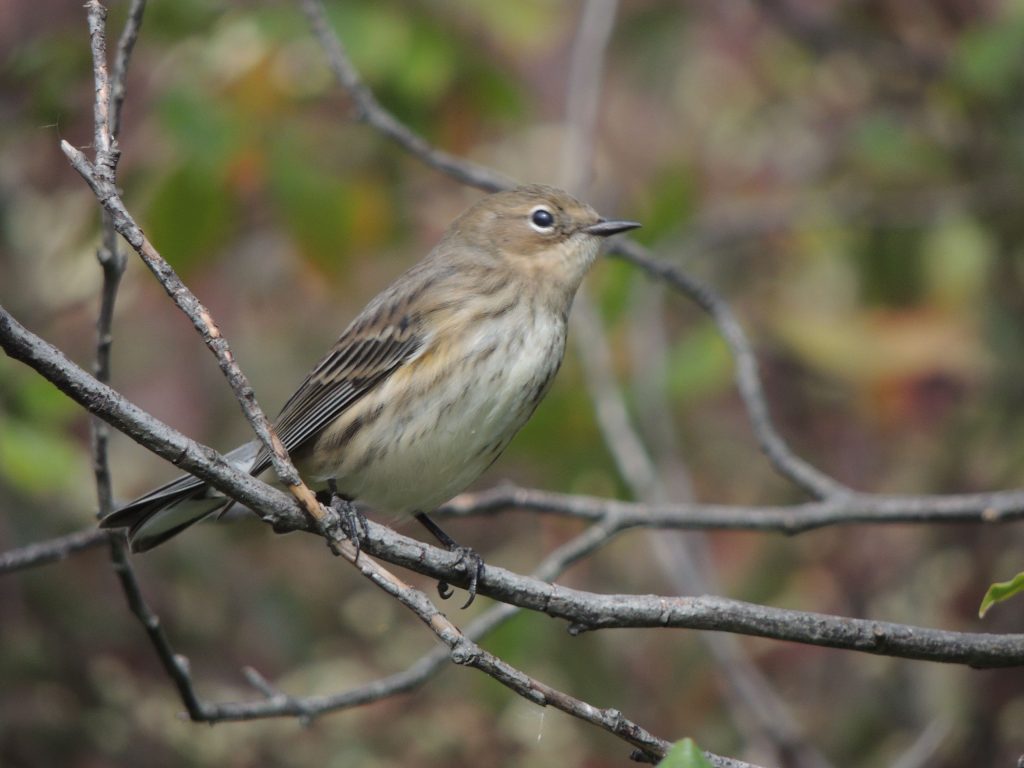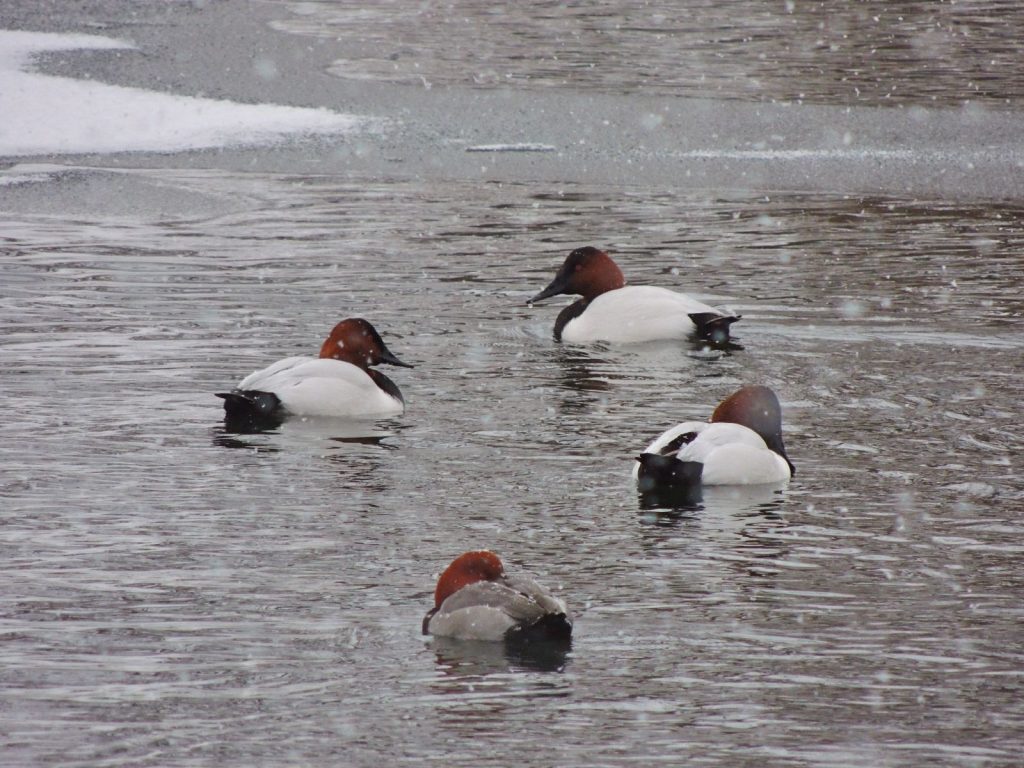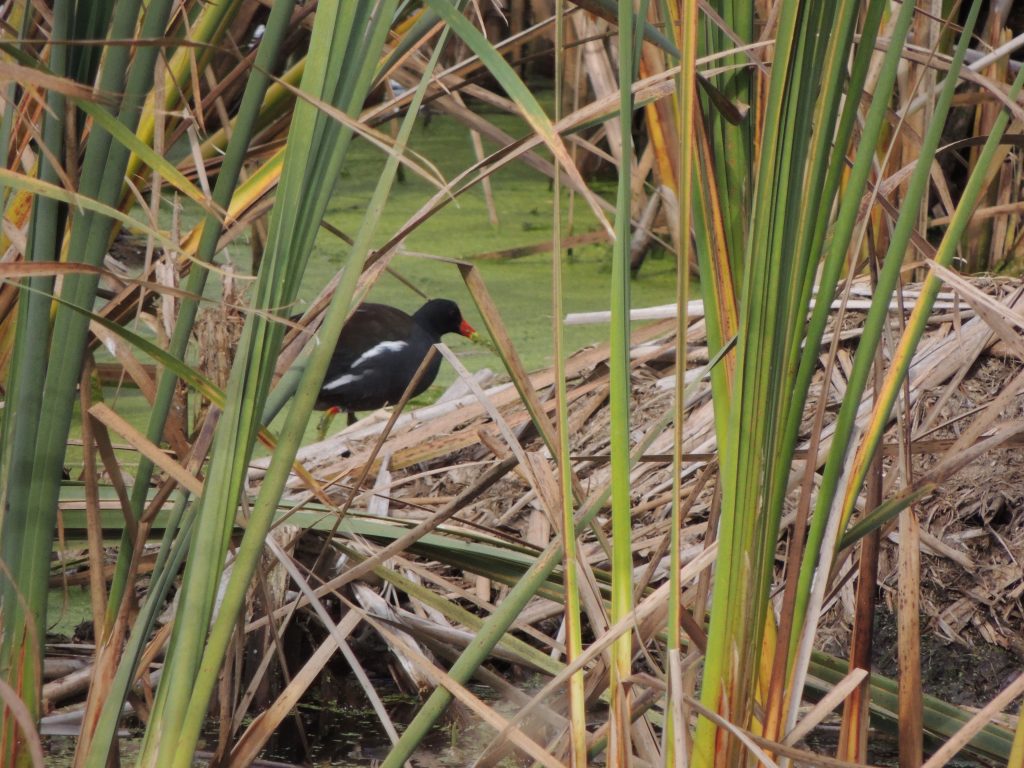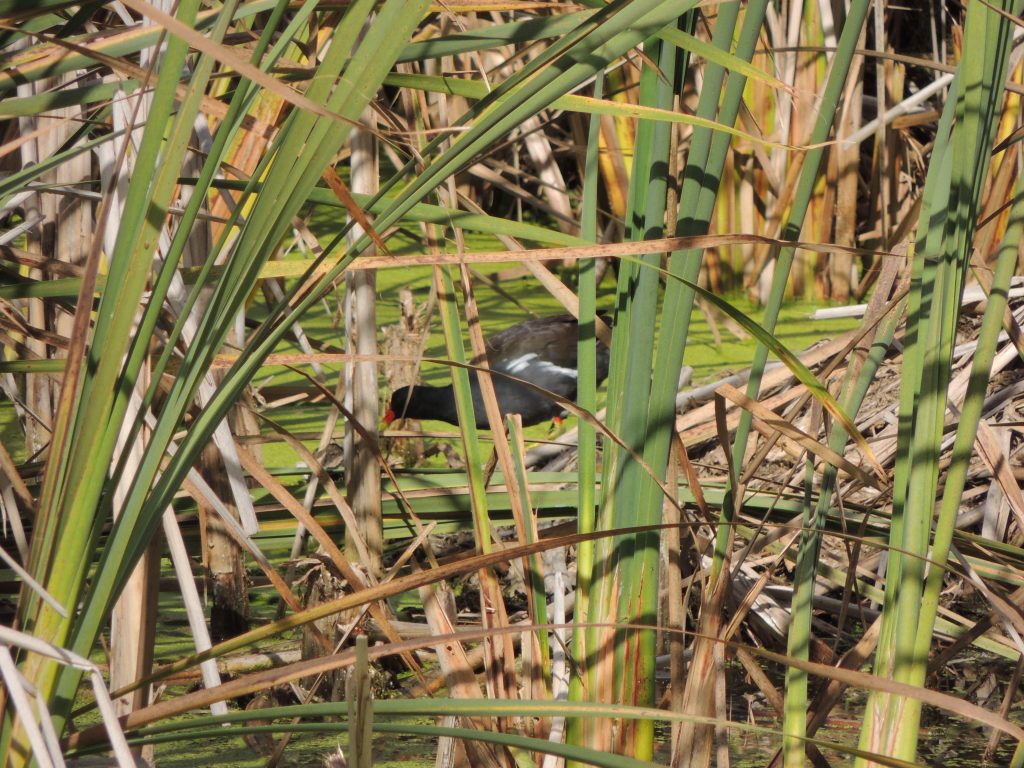September 26th 2017. Port Rowan Wetland, ON. Today brought the break in the weather we’d been waiting for. The overnight turned cool, we found morning temperatures in low teens (C.) and a steady breeze from the north-west.
With this change of weather in mind and anticipating a rewarding day my companion and I headed to Long Point, arguably one of the best (if not the best) birding spots in Canada. Long Point is a 38 km, east-west aligned, finger of sand, anchored at one end and leading out into the middle of Lake Erie. In many ways it is effectively an island and for reasons I have yet to fully understand, migrant birds are drawn to it before working their way back westward to the base of the finger to rejoin the mainland.
Our day started in the woods around the bird observatory and it was busy: busy with volunteer observers counting, collecting and banding birds, busy with visitors like us and busy with birds almost everywhere we looked. My British companion could hardly keep his feet on the ground he was so inspired and excited by the abundance. He used expressions to describe the windfall, common enough in England I imagine but oddly colourful to North Americans, “It’s mental, it’s heaving with warblers everywhere you look!” he exclaimed before disappearing down another trail dense with wild grape and poison ivy.

Much of the activity was Mytle Warblers but there were other favourites of mine like Blue-headed Vireo and Northern Harriers. In our half-day spent more or less in one small area I noted about forty species, a good half of which would be comment-worthy sightings any day and included: Wilson’s Snipe (three feeding in the deep mud of a shallow pond), a Black–throated Green Warbler, a Yellow-bellied Sapsucker, three Bald Eagles, and first Bird of the Day, a long, V-skein of Canvasbacks high overhead. Almost out of sight, flying in silence and twinkling in the sunlight, perhaps a hundred and fifty of them. Sadly many of them will end up one on someone’s table; they are one of America’s favourites, roasted and served with fried hominy and red currant. They look better, I think, served up like the ones below (ice and snow excepted).

To close out the day we made a side trip to a managed wetland where we found an interesting assortment of ducks and near-ducks: Gadwall, Green-winged Teal, Mallards, Pied-billed Grebe, American Coot and a last minute joint-Bird of the Day, a Common Gallinule with her trio of fluffy black chicks. As soon as I saw it I exclaimed “And there’s a Moorhen!” Well a year or two ago I would have been correct, it was a moorhen, but the arbiters of nomenclature have renamed it Common Gallinule; a name that doesn’t trip nearly as easily off the tongue.

Going back through some of my old books, first published variously in 1898, 1934, and 1966 this species was always Common Gallinule and then sometime in the not to distant past ‘they’ decided to call it Common Moorhen. That was an easy and welcome change for me because it is virtually identical to the European Moorhen of my childhood; an aquatic bird of quiet waterways with plenty of shoreline vegetation. Too good to last,a short-lived name change now it’s gone back to being Common Gallinule.
Others seem to see them with regularity, I don’t. It’s been a few years since I last caught a glimpse of one so, scarce or not, today’s Common Gallinule was an easy Bird of the Day in the company of that earlier flight of Canvasbacks.